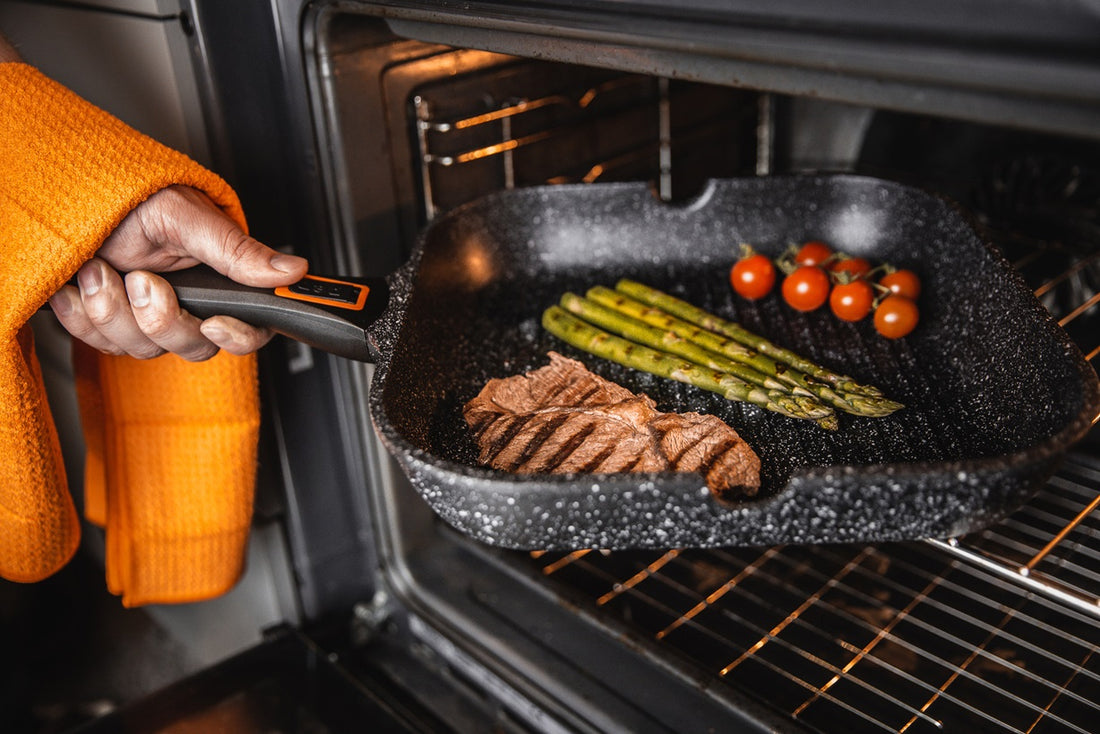Steak, a prized delicacy among meat lovers, comes in various cuts, each offering a unique flavour, texture, and culinary experience. Selecting the perfect steak can be a daunting task given the array of options available. This comprehensive guide will delve into the different cuts of steak, their characteristics, and how to choose the right one for your needs.
The Anatomy of a Steak
Steak cuts come from different parts of the cow, and their location significantly influences their taste and tenderness. Here are the primary cuts:
- Ribeye: Known for its rich flavour and tenderness, the ribeye is cut from the rib section. It is well-marbled with fat, which melts during cooking, enhancing its juicy taste. Ribeye steaks are ideal for grilling and pan-searing, making them a favourite among steak enthusiasts.
- Sirloin: Divided into top sirloin and bottom sirloin, this cut is leaner than the ribeye. The top sirloin is tender and flavourful, suitable for grilling, while the bottom sirloin is tougher and best for slow-cooking methods like braising.
- Tenderloin (Filet Mignon): As the name suggests, the tenderloin is the most tender cut, coming from the short loin. It is a lean cut with a mild flavour, often seen in high-end restaurants. Due to its tenderness, it is best cooked rare to medium-rare to preserve its delicate texture.
- New York Strip (Sirloin Strip): This cut is from the short loin and is well-marbled, offering a good balance of flavour and tenderness. It’s less fatty than the ribeye but still juicy, making it a versatile choice for various cooking methods.
- T-Bone and Porterhouse: Both these cuts include a section of the tenderloin and strip steak, separated by a T-shaped bone. The main difference is that the porterhouse has a larger portion of tenderloin. These steaks are perfect for grilling and are favoured by those who enjoy a mix of textures and flavours in one cut.
- Flank Steak: Cut from the abdominal muscles, flank steak is lean and fibrous. It has a robust flavour but can be tough if not cooked properly. It’s best marinated and cooked quickly over high heat, then sliced thinly against the grain.
- Skirt Steak: Similar to flank steak, skirt steak is cut from the diaphragm muscles. It’s known for its intense beefy flavour and is also best marinated and cooked quickly at high temperatures. It’s a popular choice for fajitas and stir-fries.
- Hanger Steak: Often referred to as the “butcher’s steak” because butchers would keep it for themselves, this cut comes from the diaphragm. It’s tender and flavourful, suitable for grilling or pan-searing.
- Rump Steak: Cut from the rear of the cow, rump steak is lean and firm. It has a strong beefy taste but can be less tender compared to other cuts. It’s often used in roasts and can be grilled or pan-fried.
- Chuck Steak: Taken from the shoulder, chuck steak is flavourful but can be tough. It’s often used for braising or slow-cooking to tenderise the meat, making it ideal for stews and pot roasts.
Choosing the Right Steak
When selecting a steak, consider several factors including marbling, thickness, and intended cooking method. Here are some tips to guide your choice:
- Marbling: Marbling refers to the streaks of fat within the muscle. Higher marbling generally means a more tender and flavourful steak. Cuts like ribeye and New York strip tend to have more marbling, making them richer and juicier.
- Thickness: The thickness of the steak affects how it cooks. Thicker steaks (1.5 inches or more) are better for achieving a nice sear on the outside while keeping the inside juicy and tender. Thinner steaks can cook too quickly, becoming overdone.
- Grade: Beef grading varies by country, but common grades include Prime, Choice, and Select in the US, with similar systems in the UK. Prime cuts have the highest marbling, followed by Choice and then Select. Higher grade steaks are more tender and flavourful but also more expensive.
- Freshness: Always choose fresh, high-quality meat. Look for a bright red colour with no brown spots, and ensure it is firm to the touch. If possible, buy from a trusted butcher who can provide more information on the meat’s origin and quality.
- Intended Cooking Method: Different cuts suit different cooking methods. For grilling, opt for cuts like ribeye, New York strip, or T-bone. For pan-searing, tenderloin or hanger steak are excellent choices. If you plan to marinate and cook quickly, flank or skirt steak are ideal.
Cooking Tips
Cooking steak to perfection requires attention to detail. Here are some general tips:
- Bring to Room Temperature: Before cooking, let your steak sit at room temperature for about 30 minutes. This ensures even cooking.
- Season Generously: Use a simple seasoning of salt and pepper to enhance the natural flavour of the steak. Apply the seasoning just before cooking.
- High Heat for Searing: For a delicious crust, cook your steak on high heat initially. Whether you’re grilling or pan-searing, a hot surface is crucial for that perfect sear.
- Use a Meat Thermometer: To achieve your desired doneness, use a meat thermometer. Rare is around 52°C (125°F), medium-rare is 57°C (135°F), medium is 63°C (145°F), and well-done is 73°C (165°F).
- Rest the Steak: After cooking, let the steak rest for 5-10 minutes. This allows the juices to redistribute, making the steak more tender and flavourful.
- Slice Against the Grain: When serving, slice the steak against the grain. This shortens the muscle fibres, making each bite more tender.
Use the Pep Griddle Pan to cook your steak, buy it here!
Pairing Steak with Sides and Wine
A great steak deserves equally great accompaniments. Here are some classic pairings:
- Sides: Traditional sides like mashed potatoes, roasted vegetables, or a fresh green salad complement steak well. For a more decadent experience, consider sides like truffle fries or creamed spinach.
- Wine: Red wine is the classic choice for pairing with steak. A robust Cabernet Sauvignon or a rich Malbec enhances the flavours of a juicy steak. For a more delicate cut like filet mignon, a lighter Pinot Noir works beautifully.
Understanding the different cuts of steak and how to choose the right one can elevate your culinary experience. Whether you prefer the rich marbling of a ribeye, the tenderness of a filet mignon, or the robust flavour of a skirt steak, knowing what to look for ensures you get the most out of your meal. Pair your steak with complementary sides and a good wine, and you’ll have a dining experience to remember.
Happy cooking!

